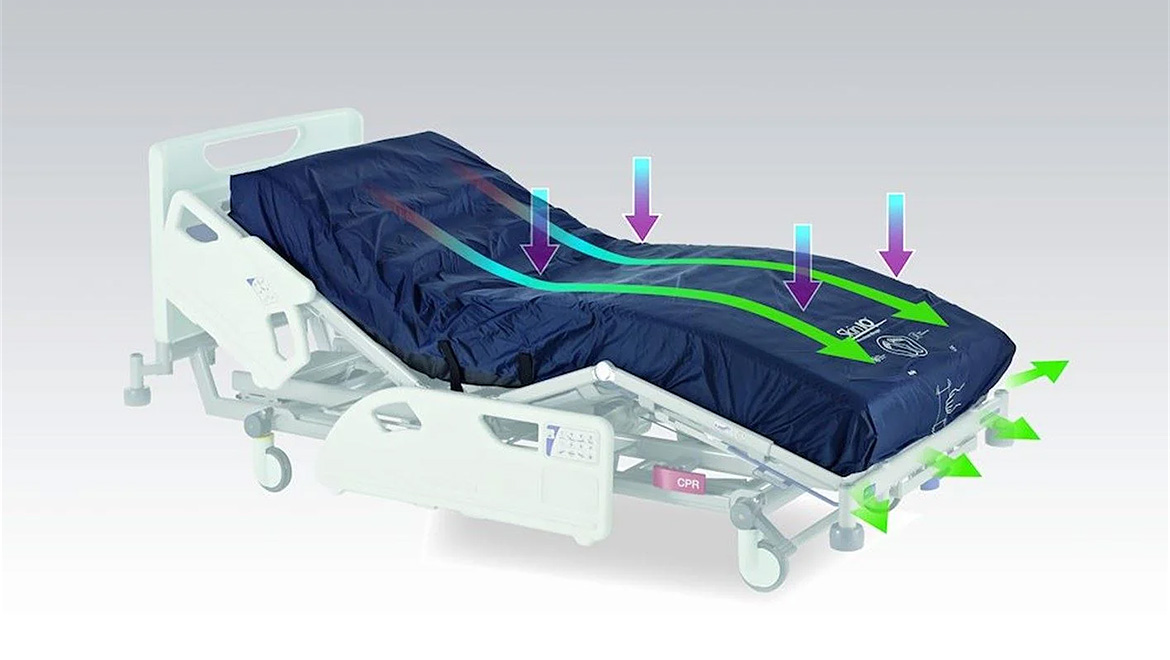What could a One Surface Strategy mean for you?
From the time PI risk is assessed to ensuring the appropriate intervention, time can be a crucial factor in improving outcomes for caregivers and those in their care.
Pressure Injuries (PIs) are one of the largest unsolved medical complications today1. Part of the reason it remains so difficult to solve, is how quickly PIs can begin to develop.
Recent publications have suggested that under certain conditions PIs can begin to develop in a matter of minutes at a cellular level1. That is why as soon as a person’s PI risk is identified, it is key to provide the appropriate preventive intervention in a timely manner.
However, prescribing the most appropriate intervention for every individual can be complex and therefore time consuming. With many different options available – each purporting certain benefits aiding the prevention or management of PI – it can be difficult to determine which solution provides the best fit for a patient’s situation.
A patient’s risk level may also fluctuate during their journey of care, requiring changes in the types of interventions required to address this risk.
Once the appropriate intervention has been prescribed, care providers must act early to ensure these interventions are in place.
For example, if a support surface with alternating pressure therapy is required, the facility staff must source an available support surface, ensure it is cleaned and disinfected, transfer the patient onto the surface, and ensure it is correctly installed and functioning. If a surface is already in place then there is the requirement to remove it, clean and disinfect it, and take it away for storage. In addition, management, administration, and training hours are often required to support all these actions.
All of this is not only costly to the care facility, but also adds to the time burden on already time-pressured care staff.
_Blog%20Image_PNG.png)
AtmosAir Velaris and the One Surface Strategy
The AtmosAir Velaris from Arjo is designed to address all of these time-critical factors.
It delivers effective pressure redistribution when used as a reactive surface, and when powered with a Velaris pump, delivers active (Alternating Pressure) therapy with full pressure offloading capability.
With the Velaris, switching between active and reactive therapies is a simple matter of connecting the mattress to the pump and turning the pump on – in other words, allowing you to switch therapies without the need to change the mattress. This can save you the time, effort and resources required to secure a new support surface, transfer the patient onto the new surface, as well as clean, disinfect and store both surfaces.
By meeting the needs of a wide range of risk profiles, the Velaris supports a One Surface Strategy that allows all except those individuals at very high risk to use the same support surface throughout their stay in care.
In turn, this can help to streamline protocols and simplify inventory management, and ultimately provide a cost-effective solution that supports best practice in PI prevention.
Find out more about the AtmosAir Velaris here, or contact your local Arjo representative.
Reference
- Gefen A (2018) The future of pressure ulcer prevention is here: Detecting and targeting inflammation early. EWMA Journal 2018, 19(2):7-13



_Blog%20Image_PNG.png)

